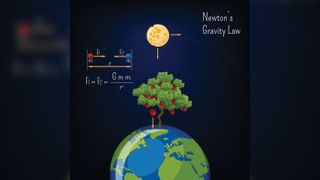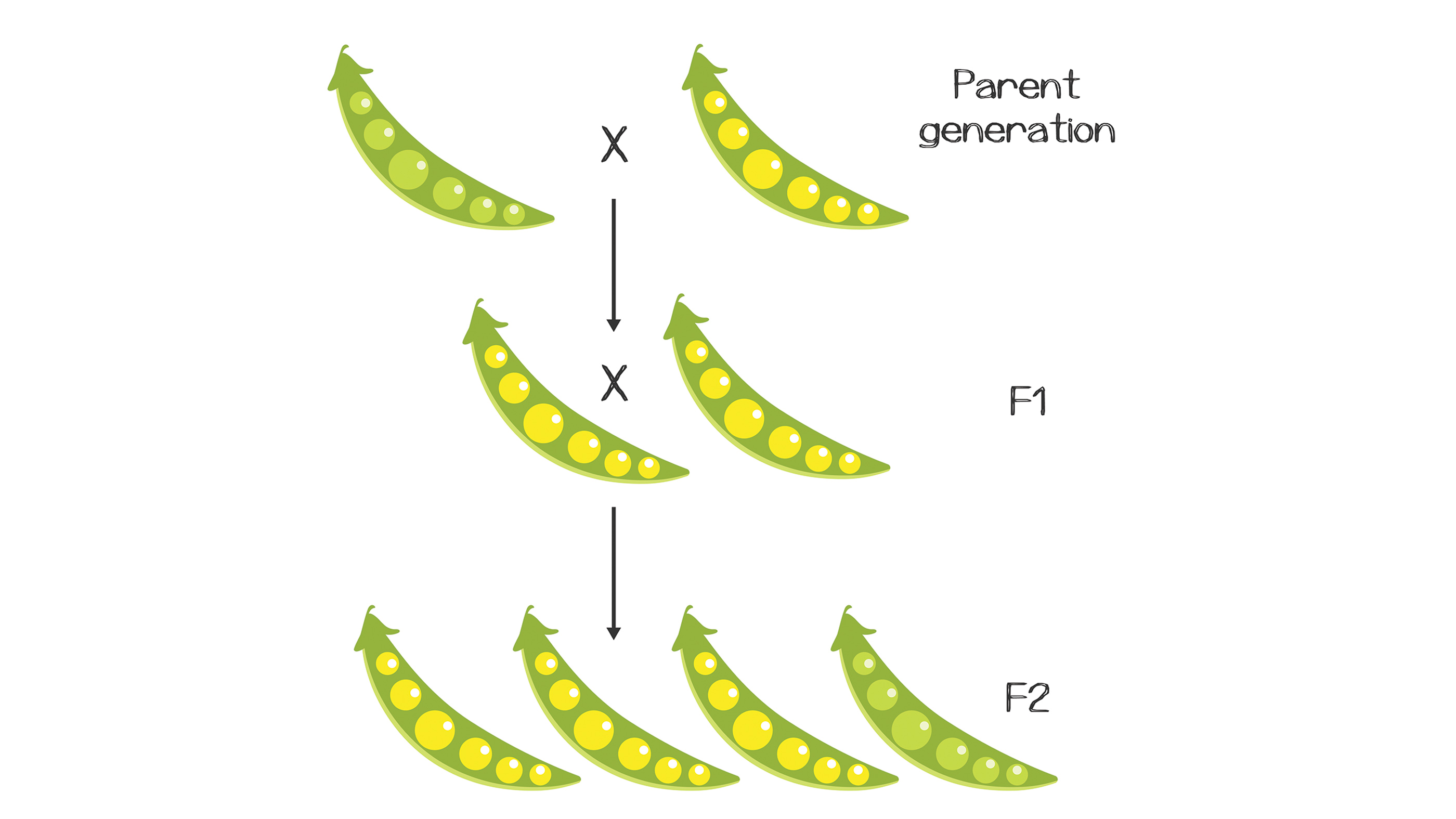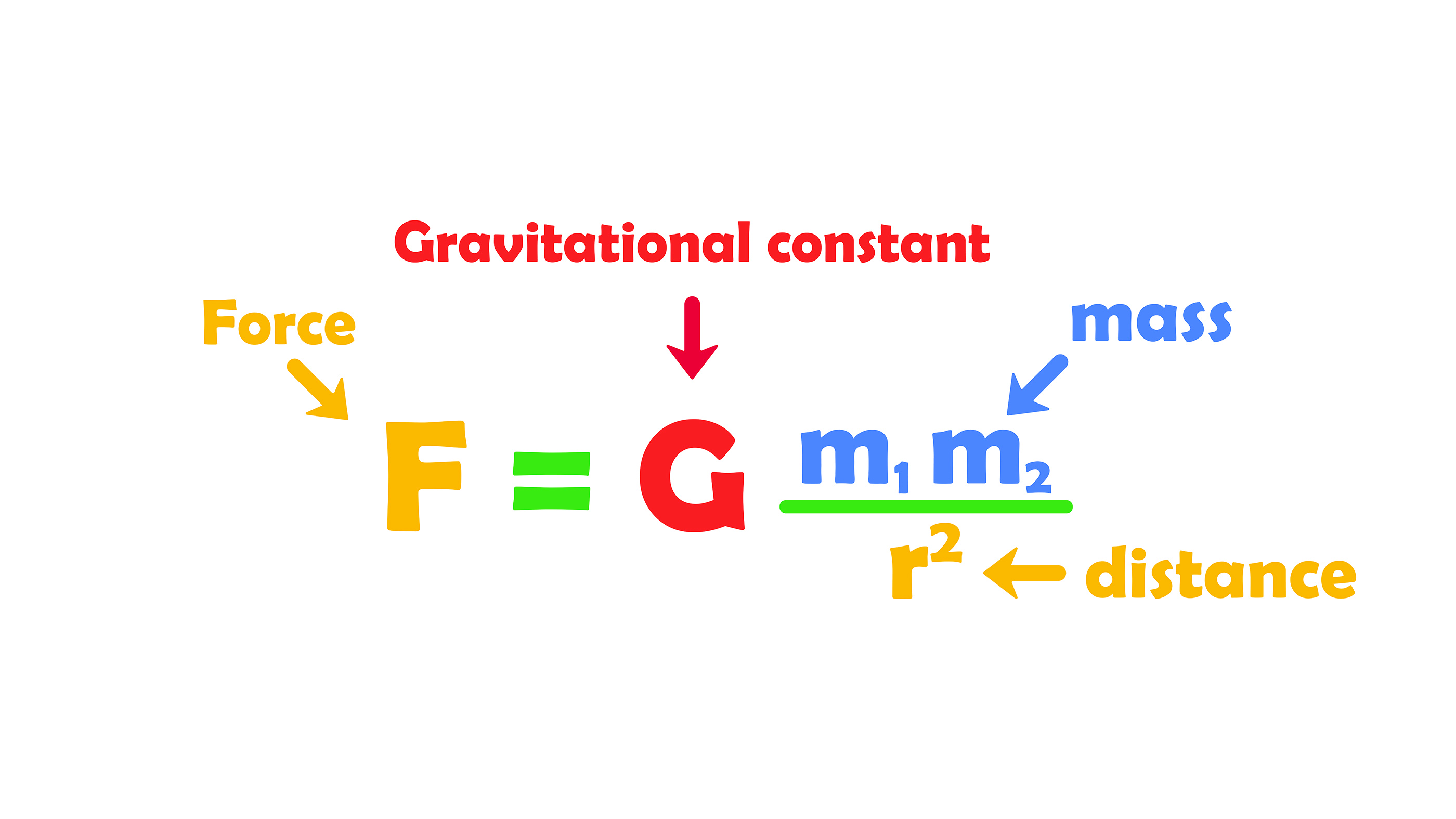Scientific Law In A Sentence
What is a law in science?

In full general, a scientific police is the description of an observed phenomenon. It doesn't explicate why the phenomenon exists or what causes information technology. The explanation for a miracle is chosen a scientific theory. It is a misconception that theories plough into laws with enough inquiry.
"In science, laws are a starting place," said Peter Coppinger, an acquaintance professor of biology and biomedical technology at the Rose-Hulman Institute of Technology in India. "From there, scientists can so inquire the questions, 'Why and how?'"
Difference between a scientific theory and a scientific police force
Many people think that if scientists find evidence that supports a hypothesis, the hypothesis is upgraded to a theory, and if the theory is found to be correct, it is upgraded to a law. That is not how it works, though. Facts, theories and laws — also as hypotheses — are separate elements of the scientific method. Though they may evolve, they aren't upgraded to something else.
"Hypotheses, theories and laws are rather like apples, oranges and kumquats: One cannot grow into some other, no matter how much fertilizer and h2o are offered," according to the University of California, Berkeley (opens in new tab). A hypothesis is a potential caption of a narrow phenomenon; a scientific theory is an in-depth explanation that applies to a wide range of phenomena. A constabulary is a argument about an observed phenomenon or a unifying concept, according to Kennesaw Country University (opens in new tab).
"There are iv major concepts in science: facts, hypotheses, laws and theories," Coppinger told Live Science.
Though scientific laws and theories are supported past a large body of empirical prove that is accustomed by the majority of scientists within that area of scientific study, and help to unify that body of data, they are non the same affair.
"Laws are descriptions — often mathematical descriptions — of natural phenomena for example, Newton's Law of Gravity or Mendel's Law of Contained Assortment. These laws simply draw the ascertainment. Non how or why they work," Coppinger said.
Coppinger pointed out that the law of gravity was discovered past Isaac Newton in the 17th century. This constabulary mathematically describes how two different bodies in the universe collaborate with each other. Nevertheless, Newton's constabulary doesn't explicate what gravity is or how it works. Information technology wasn't until iii centuries later, when Albert Einstein developed the theory of Relativity, that scientists began to understand what gravity is and how it works.

(opens in new tab)
"Newton'southward law is useful to scientists in that astrophysicists can utilize this centuries-old law to land robots on Mars. But information technology doesn't explain how gravity works, or what information technology is. Similarly, Mendel's Law of Independent Assortment describes how different traits are passed from parent to offspring, non how or why it happens," Coppinger said. Gregor Mendel discovered that two unlike genetic traits would appear independently of each other in different offspring. "Yet, Mendel knew nothing of Dna or chromosomes. Information technology wasn't until a century afterward that scientists discovered DNA and chromosomes — the biochemical caption of Mendel's laws. It was only then that scientists, such as T.H. Morgan, working with fruit flies, explained the Law of Contained Array using the theory of chromosomal inheritance. Still today, this is the universally accepted explanation (theory) for Mendel'south Constabulary," Coppinger said.
The divergence between scientific laws and scientific facts is a bit harder to ascertain, though the definition is of import. Facts are simple, one-off observations that have been shown to exist true. Laws are generalized observations about a relationship between two or more than things in the natural world based on a variety of facts and empirical testify, ofttimes framed as a mathematical argument, according to NASA.
For case, "Apples fall downward from this apple tree tree" is considered a fact because information technology is a simple statement that tin can be proven. "The strength of gravity betwixt whatever two objects (like an apple tree and the Earth) depends on the masses of the objects and the altitude betwixt them" is a law considering it describes the behavior of two objects in a certain circumstance. If the circumstance changes, so the implications of the law would modify. For case, if the apple and the Globe shrank to a subatomic size, they would deport differently.
Scientific laws and mathematics

(opens in new tab)
Many scientific laws can be boiled downwardly to a mathematical equation. For example, Newton'southward Law of Universal Gravitation states:
Fgrand = Thou (mane ∙ 10002) / d2
Fg is the force of gravity; M is the universal gravitational constant, which can exist measured; m1 and m2 are the masses of the two objects, and d is the altitude between them, co-ordinate to The Ohio Country University (opens in new tab).
Scientific laws are also oftentimes governed by the mathematics of probability. "With big numbers, probability e'er works. The house e'er wins," said Sylvia Wassertheil-Smoller, a professor at Albert Einstein Higher of Medicine in New York. "We tin calculate the probability of an outcome and we can determine how certain we are of our estimate, merely there is ever a trade-off between precision and certainty. This is known equally the confidence interval. For example, we can exist 95% sure that what we are trying to approximate lies within a certain range or we can be more certain, say 99% sure, that it lies inside a wider range. Just like in life in general, we must accept that there is a merchandise-off."
Practice laws alter?
Simply considering an idea becomes a police doesn't mean that information technology can't exist changed through scientific enquiry in the future. The utilise of the give-and-take "police" by laymen and scientists differs. When almost people talk about a law, they mean something that is absolute. A scientific police force is much more flexible. It can accept exceptions, exist proven wrong or evolve over fourth dimension, according to the University of California, Berkeley.
"A practiced scientist is one who e'er asks the question, 'How can I show myself incorrect?'" Coppinger said. "In regards to the Law of Gravity or the Law of Contained Assortment, continual testing and observations accept 'tweaked' these laws. Exceptions have been found. For example, Newton's Law of Gravity breaks down when looking at the breakthrough (subatomic) level. Mendel'southward Police of Independent Assortment breaks downwardly when traits are "linked" on the same chromosome."
Examples of scientific laws
- The police force of conservation of energy, which says that the full free energy in an isolated arrangement remains constant. In other words, free energy cannot be created or destroyed, co-ordinate to Britannica (opens in new tab).
- The laws of thermodynamics, which bargain with the relationships between heat and other forms of energy
- Newton's universal police of gravitation, which says that any 2 objects exert a gravitational forcefulness upon each other, according to the University of Winnipeg (opens in new tab)
- Hubble's police force of cosmic expansion, which defines a relationship between a galaxy's distance and how fast it'south moving away from us, co-ordinate to astrophysicist Neta A. Bahcall
- The Archimedes Principle, which states that the buoyant force on an object submerged in a fluid is equal to the weight of the fluid displaced by that object.
Additional resources
- This resources from the New S Wales Education Standards Authorisation (opens in new tab) has an in-depth caption of scientific theories and laws.
- Find out why a theory can't evolve into a law in this commodity from Indiana Public Media (opens in new tab).
- Picket a video nigh the departure between a scientific law and a scientific theory from TEDEd. (opens in new tab)
Bibliography
University of California, Berkeley, "Misconceptions about scientific discipline." https://undsci.berkeley.edu/pedagogy/misconceptions.php
NASA IMAGE Education Eye, "Teacher's Guide: Theories, Hypothesis, Laws, Facts & Beliefs." https://www.nasa.gov/pdf/371711main_SMII_Problem23.pdf
The Ohio State University, "Lecture 18: The Apple tree and the Moon: Newtonian Gravity." https://world wide web.astronomy.ohio-state.edu/pogge.i/Ast161/Unit4/gravity.html
Encyclopedia Britannica, "Conservation of free energy." Nov 16, 2021. https://www.britannica.com/science/conservation-of-energy
University of Winnipeg, "Newton's Police force of Gravitation." 1997. https://theory.uwinnipeg.ca/physics/circ/node7.html
Neta A. Bahcall, "Hubble'due south Constabulary and the expanding universe," Proceedings of the National Academy of Sciences, Volume 112, March 2015, https://doi.org/10.1073/pnas.1424299112
Scientific Law In A Sentence,
Source: https://www.livescience.com/21457-what-is-a-law-in-science-definition-of-scientific-law.html
Posted by: reynoldsfoure1965.blogspot.com


0 Response to "Scientific Law In A Sentence"
Post a Comment